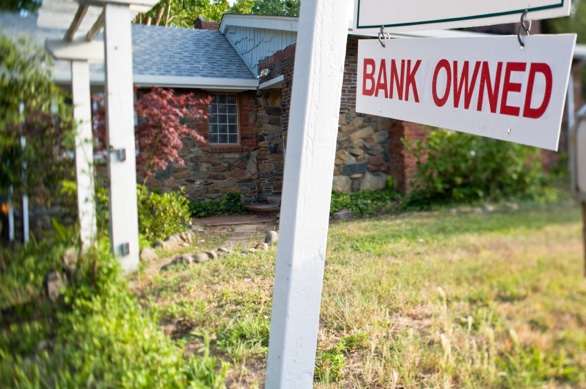Loan Servicers Work the Fine Print in Obama Foreclosure Plan
Startling requirements in out-dated, but still used paperwork raises questions about how well Treasury is overseeing the centerpiece of Obama’s foreclosure crisis solution.
Jul 31, 2020308.4K Shares5.2M Views
iStockphoto
Even as the Obama administration pressesthe lending industry to get more mortgage loans modified, the practice of forcing borrowers to sign away their legal rights in order to get their loans reworked is a tactic that some servicers just won’t give up on.
Waivers requiring borrowers to give up any legal claims related to their mortgages, even in cases where borrowers may be victims of predatory lending, are showing up sporadically in loan modification agreements under the Obama administration’s Making Home Affordableplan, consumer attorneys say. They were stunned to find the legal waivers still being used, despite more than a year of efforts – including callsfrom lawmakers – to get rid of them.
Illustration by: Matt Mahurin
“It was shocking to see that people are still being asked to waive their legal rights,” said Bruce Dorpalen,national director of housing counseling for ACORN Housing Corp. “I mean, this should be abolished. It’s incredible that it’s still in there.”
The Obama modification plan, launched five months ago as the centerpiece of the administration’s anti-foreclosure efforts, includes financial incentives for servicers to participate, with the government paying $1,000 for each loan they modify, and $1,000 per year for up to three years. The goal is to rework loans with more favorable terms and lower interest rates, and to keep delinquent borrowers or those at risk of default in their homes.
The Treasury Department’s published guidelines for the $75 billion taxpayer-funded program specifically prohibit the waivers. Mortgage giants Fannie Mae and Freddie Mac removed the waivers from their standard loan modification agreements earlier this year. But Diane Thompson, an attorney with the National Consumer Law Center, said she has seen legal waivers resurface in loan modification agreements by Aurora Loan Services, Ocwen Financial Corp., and other firms. She also is getting complaints about waivers in Bank of America agreements.
“The waivers continue to be an issue,” Thompson said.
Complaints about the waivers come just as the Obama administration tries to ramp up loan modifications under its plan, which has gotten off to a slow start. More than 200,000 trial loan modifications have begun under the program’s Home Affordable Modification Program initiative, the Treasury Department said, well short of the initial goal of 3 to 4 million agreements. On Tuesday, top officials from the Treasury Department and the U.S. Department of Housing and Urban Development metwith 25 servicers to put pressure on them to complete more loan modifications – something Thompson described as a “come to Jesus” meeting. The administration will begin publicly reporting loan modification progress by individual servicers next month, HUD saidin a news release. The government also will develop a “second look” program with Freddie Mac to make sure borrowers aren’t wrongly turned away.
But the re-emergence of the waivers shows how dramatic gestures or public shaming might not be enough. They’re an example of how problems exist deep in the the fine print of loan agreements — something media attention to a high-level meeting of servicers in Washington doesn’t address. The waivers prompt concerns about how carefully the program was put together, and how well Treasury is supervising it. And they raise questions about how effective it can really be, if there are no real consequences or penalties for doing loan modifications improperly, or for not doing enough of them**.**
Frustration over the program has been growing. Sen. Christopher Dodd (D-Conn) chairman of the Senate Banking Committee, senta letter to Treasury Secretary Timothy Geithner last week, asking for an investigation into violations in loan modifications, including the waivers. Thompson testifiedbefore Dodd’s committee on July 16, providing copies of the waivers found in loan agreements.
Adam Levitin,a Georgetown University law professor and credit expert, said the inclusion of waivers by servicers being paid by the government to complete proper loan modifications is especially galling. It’s not clear how widespread the use of the waivers is. It’s also unknown many servicers are charging the government for loan modifications that include waivers, and how many are simply doing them independently of the government’s program. But it’s also obvious that the waivers aren’t rare exceptions, he said, and that the administration should be looking into them.
“Is Treasury paying money for this?” Levitin said. “If so, it’s like paying a government contractor for performing substandard work. Why are servicers getting millions of dollars for doing loan modifications if they’re not going to do them the right way? We’re relying on the servicers to do the right thing and time after time, they don’t do it. These companies just say one thing in front of Congress and then go and do something else. Treasury should be demanding its money back and handing out some penalties for this.”
The fact that the administrations’ main foreclosure program allows for a slip-up like the waivers also is troubling, he said. Getting loan modifications done “does not seem to be the top priority of this administration,” Levitin said.
Legal waivers in loan modifications have a long history. Until last summer, they were regularly included in loan modification contracts, often buried in a long list of requirements. Borrowers often had no idea they were signing their rights away. The waivers could mean that borrowers would have to give up all legal claims related to their mortgage, not just to the loan modification, even in cases where borrowers signed up for predatory loans they didn’t understand.
In a dramatic confrontationlast July, Rep. Barney Frank (D-Mass.), chairman of the House Financial Services Committee, told representatives of Bank of America to get rid of waivers in their agreements. His pronouncement came after Bank of America representatives denied they were using the waivers – and Julia Gordon,senior policy counsel at the Center for Responsible Lending, produced one from her briefcase.
Then, in January, Fannie Mae and Freddie Mac also removedthe waivers from their standard streamlined loan modification agreements, following a TWI storyabout the practice.
Advocates hailedthe end of the waivers as a win for borrowers, who would no longer be forced to give up their rights to pursue legal action regarding their mortgages, in order to get a loan modification. As a result, they find the resurfacing of the waivers particularly troubling.
“At this point, it’s this constant whack-a-mole exercise,” Gordon said. “By this time, I would think the issue would have been aired sufficiently that servicers would be aware of this.”
Gordon added that the waivers illustrate that “there’s a lot of sloppiness out there” with regard to the administration’s loan program, which she finds disappointing.
For the program to work, there must be consequences for servicers that include the legal waivers or any other irregularities in their loan modifications, she said. “There shouldn’t be any gray areas here,” she said.
Thompson, of the National Consumer Law Center, said it’s possible that some servicers simply are using outdated forms that still require the waivers. Nonetheless, she said, it’s not in the servicers’ interests to get rid of the waivers in a timely manner – and some clearly aren’t doing so, she said.
Some advocates were particularly surprised to find that Ocwen had used the waivers, considering the servicer has been leadingthe industry in doing loan modifications. But Paul Koches, general counsel for Ocwen,said his company was just as surprised, and called their inclusion a mistake.
The waivers had been “fairly standard practice” in loan agreements for years, he said. But in late 2008, after meeting with representatives of the National Community Reinvestment Coalitionand hearing concerns about the waivers, Ocwen agreed to remove them from all loan modification agreements.
The company assumed all the waivers were gone, until Thompson’s testimony showed otherwise. Ocwen then realized one of its old forms still included the waiver. Ocwen is working to fix the form. Only a handful of borrowers were affected, and they’ll be assured the waivers won’t be enforced, Koches said.
Including legal waivers “is no longer our policy and we will be so notifying the homeowners to whom we mistakenly sent the old version,” he said.
Bank of America stopped using the waivers in September of last year, said spokesperson Jumana Bauwens. She did not know why or how waivers might be showing up in Bank of America loan modifications, and said the bank had not been aware of complaints about them. Bank officials will look into the matter, she said.
Aurora Loan Services could not provide a representative to comment.
Dorpalen, of Acorn, said his staff saw waivers showing up in loan modification agreements in May. Counselors told servicers to take them out before allowing their clients to sign contracts, he said. Since then, the waivers haven’t appeared in loan modifications that his group sees, he said.
Some kinks in launching a new program are to be expected, and the Treasury Department doesn’t have past experience with loan modifications, Levitin noted. But it’s hard to remain patient with the slow pace of the administration’s efforts to slow down foreclosures, he said. At this rate, by the time Treasury gets all the program’s difficulties ironed out, it will be slated to expire.
“I lost patience a year ago,” Levitin said. “At this point, it’s just sad.”
Gordon, of the Center for Responsible Lending, said the waiver mess shows once again how Congress’ failure to approve mortgage cramdown legislation is adversely affecting foreclosure prevention. Allowing bankruptcy judges to modify mortgage loans was the “backstop,”if voluntary loan modification wasn’t enough.
Lenders that opposed cramdown argued that the loan modification program was a better choice, Gordon noted. But so far, loan modifications aren’t keeping pacewith foreclosures, and some borrowers already in trouble are unknowingly signing their legal rights away.

Paolo Reyna
Reviewer
Paolo Reyna is a writer and storyteller with a wide range of interests. He graduated from New York University with a Bachelor of Arts in Journalism and Media Studies.
Paolo enjoys writing about celebrity culture, gaming, visual arts, and events. He has a keen eye for trends in popular culture and an enthusiasm for exploring new ideas. Paolo's writing aims to inform and entertain while providing fresh perspectives on the topics that interest him most.
In his free time, he loves to travel, watch films, read books, and socialize with friends.
Latest Articles
Popular Articles

